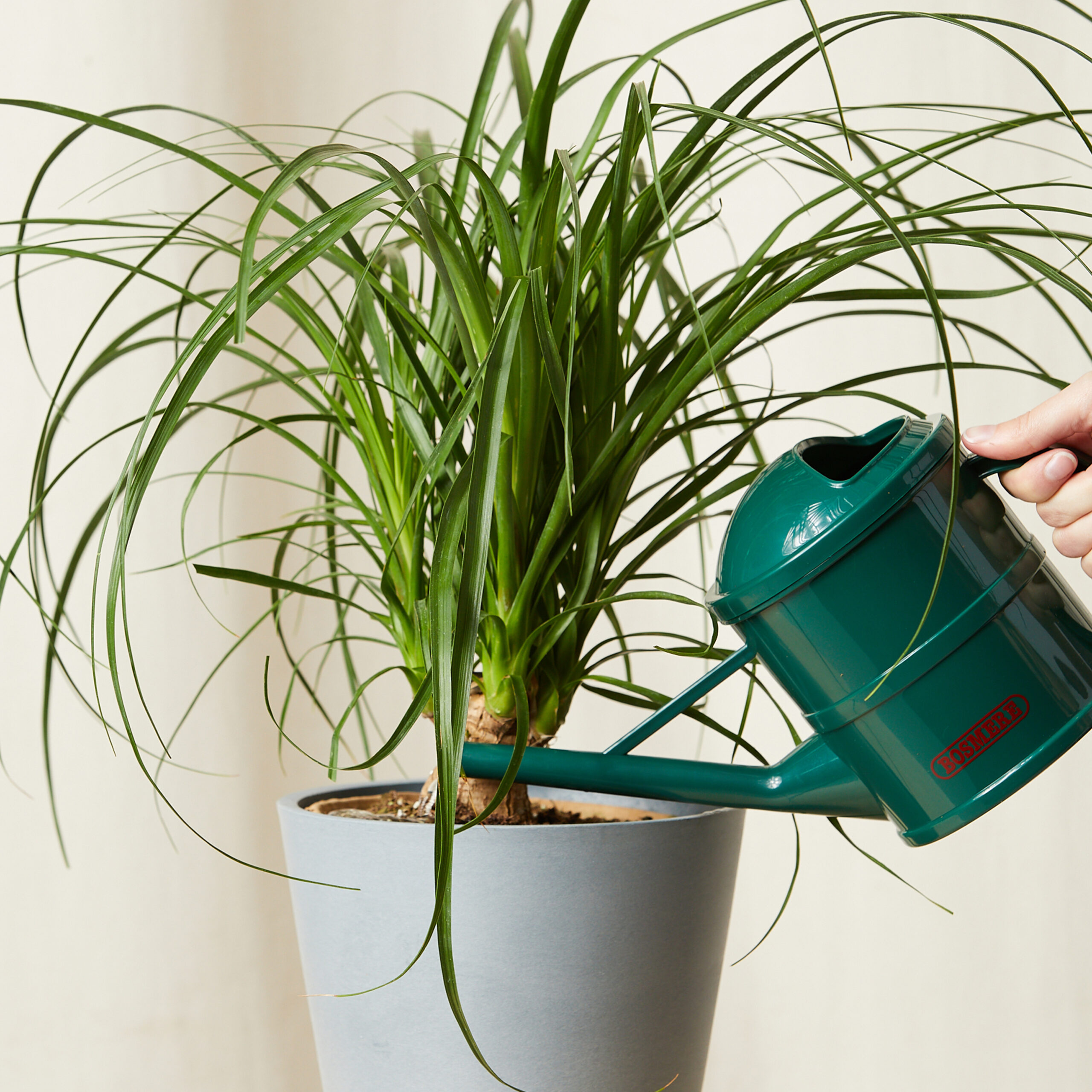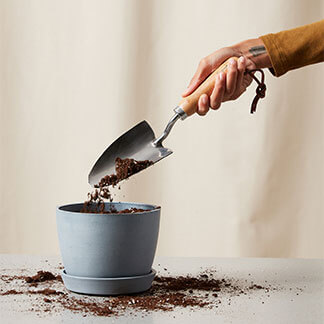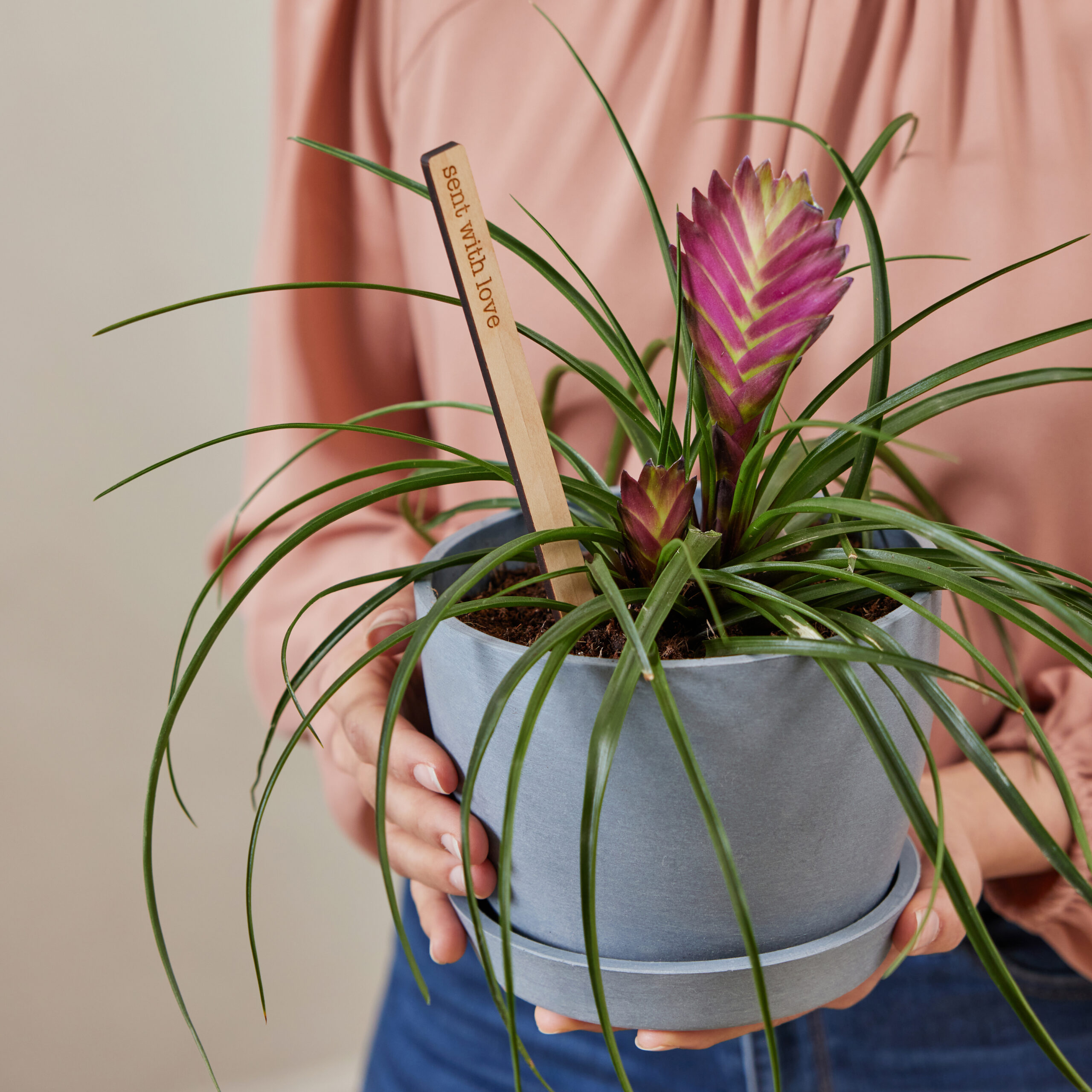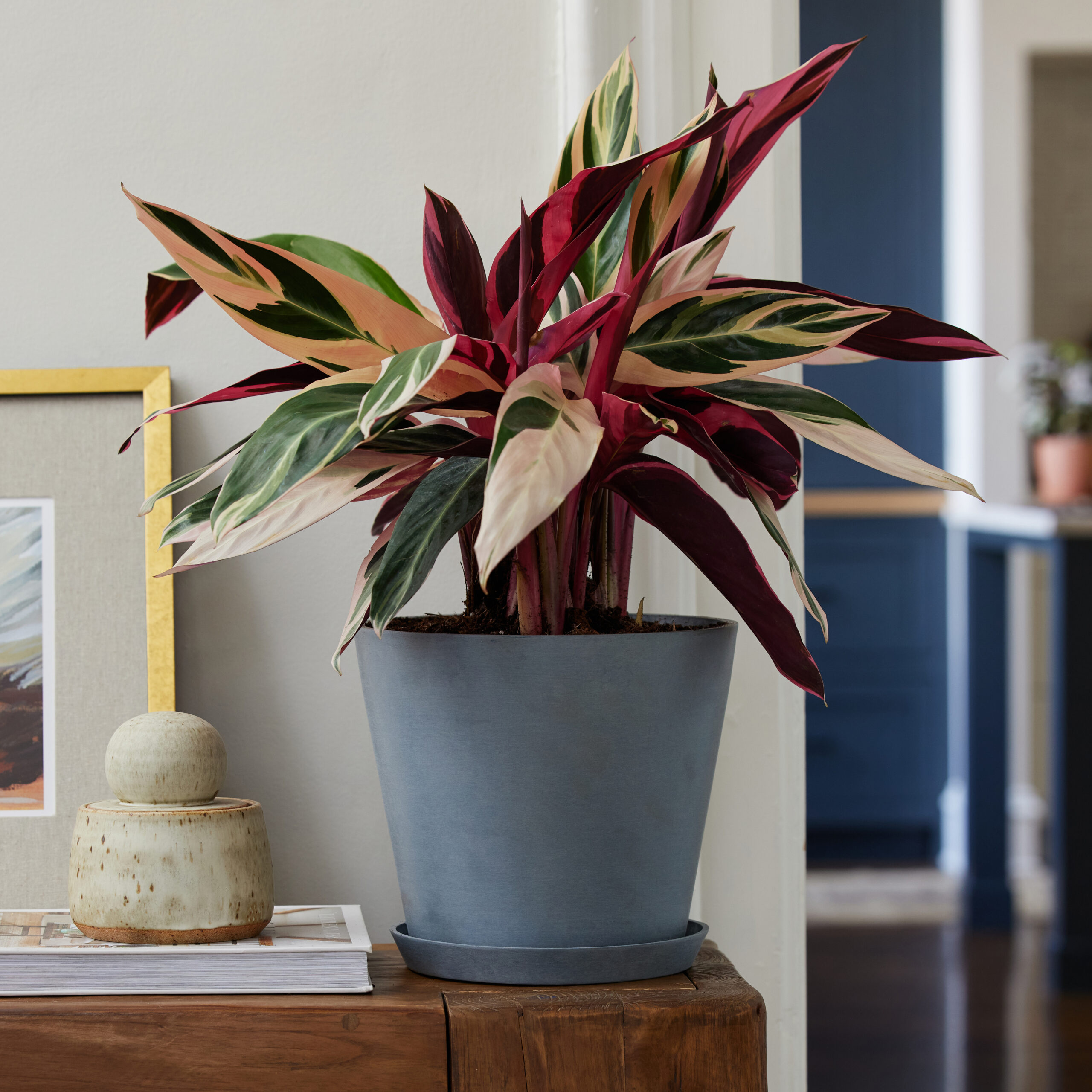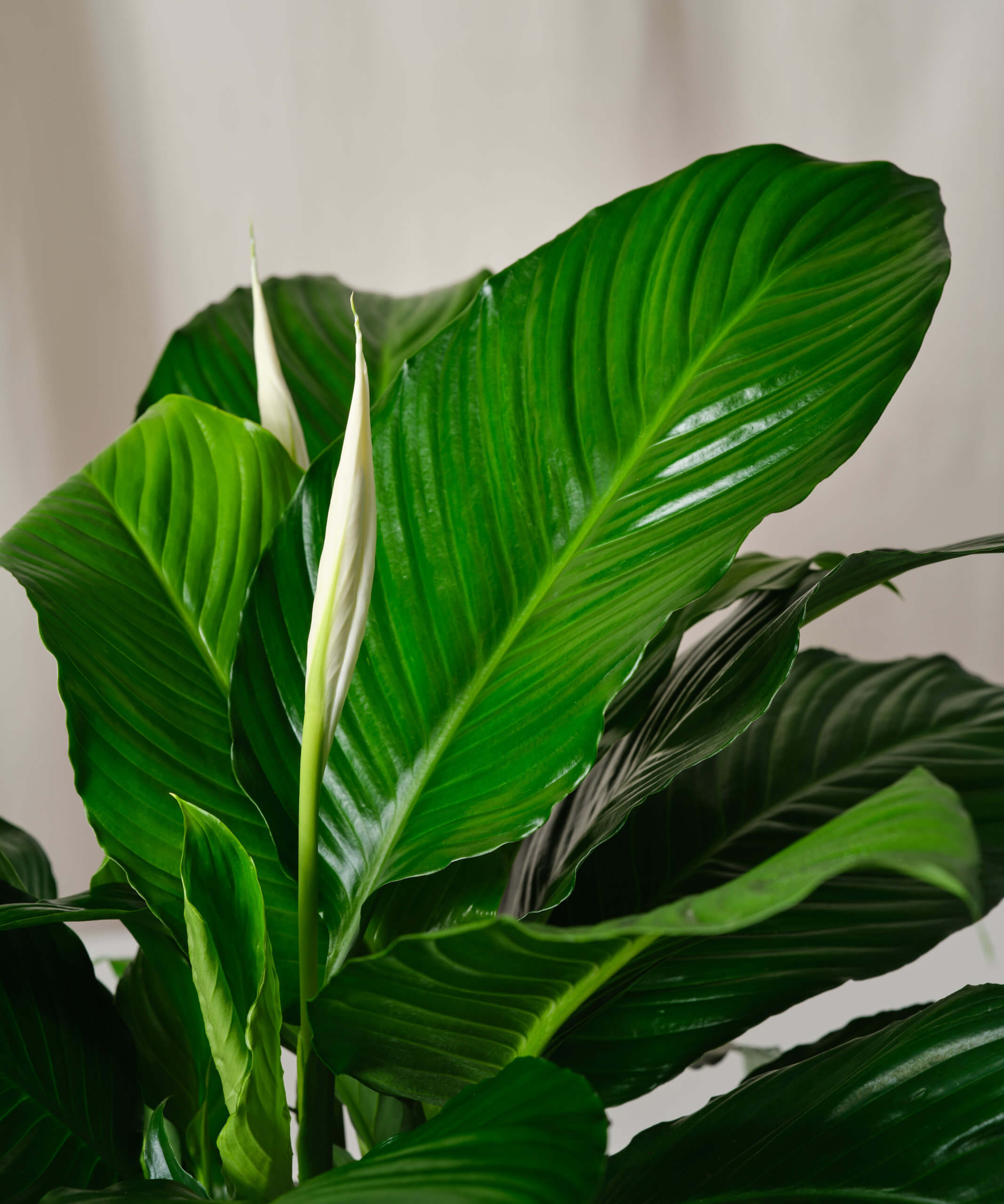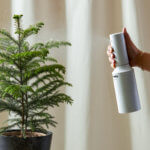Yellow leaves are a common problem for peace lily plants, and generally if taken care of early the plant will rebound quickly. There are several potential reasons your peace lily leaves will turn yellow:
- Aging leaves that naturally turn yellow
- Overwatering or underwatering
- Water quality
- Lighting issues
- Pests
We’ll take you through all of these potential problems, including how to identify if they are the issue and how to fix them.
Watering
Peace lilies are tropical plants that are used to receiving lots of humidity and moisture. That being said, it’s easy to get overexcited and give more water than it needs. Drooping or yellowing leaves can be a sign of both underwatering and overwatering.
You should only be watering when the top 50% of the potting mix has completely dried out. Water thoroughly until it flows out of the drainage hole and discard any excess water. If you water more often than this and the soil is constantly wet, the roots cannot access the nutrients and oxygen in the soil. Over time, constantly wet soil will also cause root rot, which is a serious problem.
Peace lilies are very resilient and can tolerate dry soil for several days. However, alternating between bone dry and wet soil from ill-timed waterings can create stress and cause your plant to have yellow leaves as well as crispy leaf edges. If the plant gets too dry for too long, the roots start to shrivel and die back. Then, once the plant is thoroughly watered, it cannot take up the moisture properly. Give your plant a good drink and it should perk up in no time.
Issues with your tap water
Yellowing and browning on the leaves can be caused by the tap water used to water your plant. Normal tap water can have added minerals and fluoride that can affect sensitive plants like peace lilies. If possible, use distilled or rainwater. If this isn’t possible you can leave some tap water out overnight to reduce the concentration of the additives. Even if you’re using filtered water, check with the brand’s manufacturer to see if the filter removes fluoride. Most do not!
Lighting issues
Peace lilies grow naturally under jungle canopies and prefer bright but indirect light. Bright indirect light can be found in places close to an east-facing window or a few feet back from an unobstructed southern or western window. If the southern or western window has something like a sheer curtain or natural shade from a tree or building outside, the plant can be placed a little closer.
If the plant is exposed to too much direct sunlight it can start to dry out and turn a pale bleached color. Try moving your plant farther away from windows to a spot where they will receive only indirect light to help them rebound.
On the other hand, if your plant is getting too low of light, it can’t properly achieve photosynthesis, which can lead to yellowing leaves and no flowers.
Fertilizing
If none of the above issues seem to be the cause, consider fertilizing your plant. A sign that your plant is suffering from a lack of nitrogen, iron, or magnesium is that the areas surrounding veins in the leaves will turn yellow. This is a condition called chlorosis. You can safely fertilize your peace lily approximately every 6 weeks while your plant is actively growing in the spring and summer. Pause all fertilizing during the fall and winter months.
Pests
Weakened or stressed plants become more susceptible to insect infestations. Sap-sucking bugs like spider mites can drain your plant of moisture. This problem quickly manifests itself by yellowing leaves. Scale, mealybugs, and spider mites occur frequently in indoor conditions. If not killed early on, these small pests proliferate and spread into nooks and crannies. The piercing mouths of the insects exhaust your plant and accelerate yellowing, especially if your plant is already unhealthy from poor lighting, a nutrient deficiency, or improper soil moisture.
Natural aging
If most of your plant still looks healthy while putting out new growth and the older leaves near the bottom are yellowing, your plant may just be dropping them naturally as it prepares for new growth. Your plant will naturally drop these leaves on its own, but you can remove them yourself with a clean pair of pruning shears.


